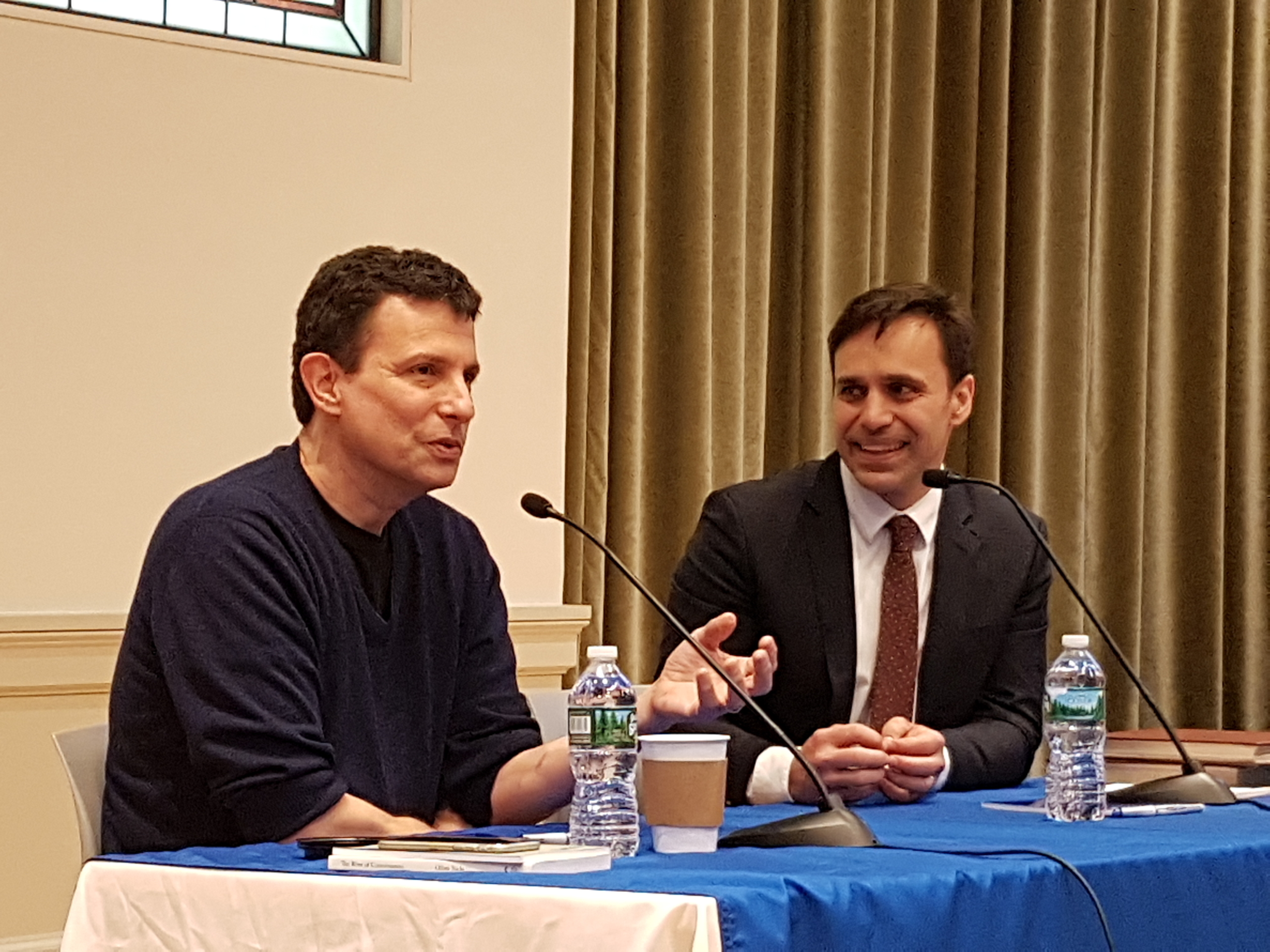Sign up for the daily CJR newsletter.
Even after nearly two decades on the job, New Yorker Editor David Remnick still doesn’t feel that he’s figured it out. “I’m not quite there yet,” Remnick told George Delacorte Professor of Magazine Journalism Keith Gessen in front of a packed room at Pulitzer Hall as part of the Columbia Journalism School’s Delacorte Lecture Series.
Tracing his career from the night desk at The Washington Post to serving as that paper’s Moscow bureau chief, and then to his current position as editor of the nation’s most prestigious magazine, Remnick spoke with humor and cautious optimism about the profession, while expressing pessimism about global political trends which he said are moving away from democracy.
Asked by Gessen about his most difficult moment since ascending to the top of the New Yorker masthead in 1998, Remnick replied, “Now is not so easy. Figuring out who we should be, how we should be, what to cover day by day when you’re in a political situation like this, is not without complication.”
Remnick is the rare editor who also regularly reports and writes his own pieces. This past fall, even as he steered the magazine through coverage of a tumultuous campaign and its aftermath, he produced 10,000 words on Leonard Cohen’s final months, wrote a morning-after call to action on November 9th, and spent time with Barack Obama before and after the election for another major magazine piece.
His conversation with Gessen touched on a variety of topics, including The New Yorker’s business model, its efforts to increase the diversity of its writers, and how journalism has reacted to the Trump presidency.
The New Yorker has managed to stay above water in a media climate of financial uncertainty by cultivating a loyal audience willing to shell out big bucks for subscriptions to the magazine and its expanded website. Print advertising in the magazine, which as recently as a decade ago contributed 70 percent of its revenue, now accounts for less than half of the bottom line, Remnick said. He noted that in 1967, The New Yorker published 6,000 pages of print ads; by 2017, that number has dipped below 1,000. Subscription revenue has filled the gap. “People want things that are true, and that are not bullshit,” Remnick said. “I think people somehow know it, and appreciate it, and are willing to pay.”
I think if you’re involved in a journalistic enterprise that you trust and believe in, and the only limit on your work is your own talent and exhaustion, then you are very lucky.”
Part of the reason they’re willing to pay is that The New Yorker has built a powerhouse website that requires a subscription to gain full access. Remnick discussed the magazine’s halting transition to the internet and its attempt to create work commensurate with the pieces that appear in print, or, as he put it, “the same wine in new bottles.” The website, Remnick says, provides opportunities to experiment with new voices. “This is an advantage of the Web: it’s allowed you to take chances on, and open the door to, people who maybe aren’t completely down the road yet. [Online writing is] shorter, more frequent. Muscles get built up. You can experiment more.”
Asked about one of those new voices, recent hire Doreen St. Félix, who is African American, Remnick explained why he feels diversity is important. “Look where we are,” he said. “What world do we live in? [The magazine] should reflect the intelligences and experiences of the world.”
One thread running through much of the evening’s conversation was the passion Remnick maintains for his job after 35 years in the business. “I find journalism fun,” he said. “The thing I always dreaded in life was waking up in the morning and not knowing why I was doing what I was doing. I didn’t want to live a life of quiet desperation. I think if you’re involved in a journalistic enterprise that you trust and believe in, and the only limit on your work is your own talent or exhaustion, then you are very lucky.”
Has America ever needed a media defender more than now? Help us by joining CJR today.







